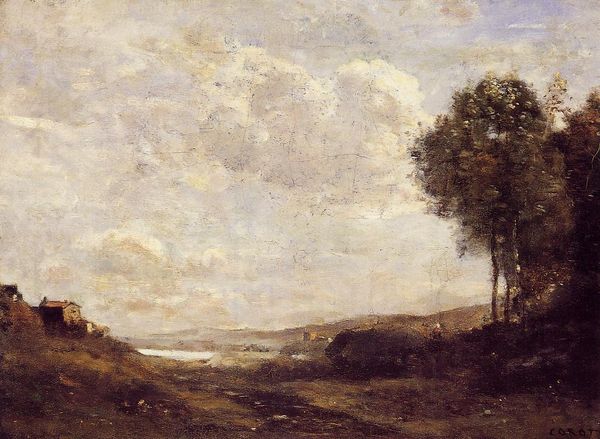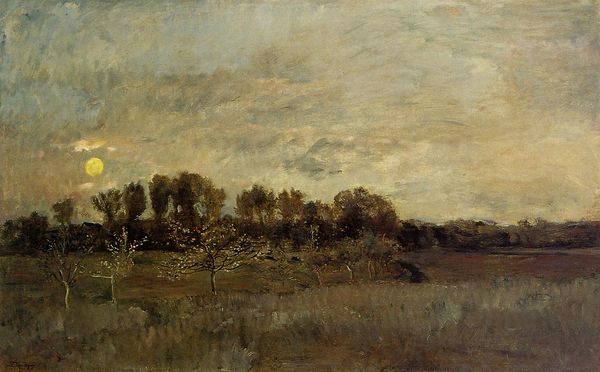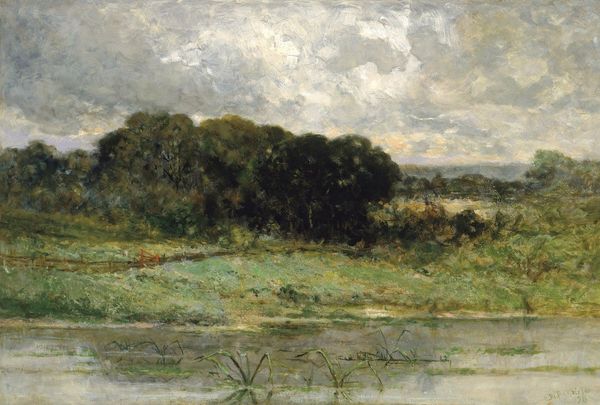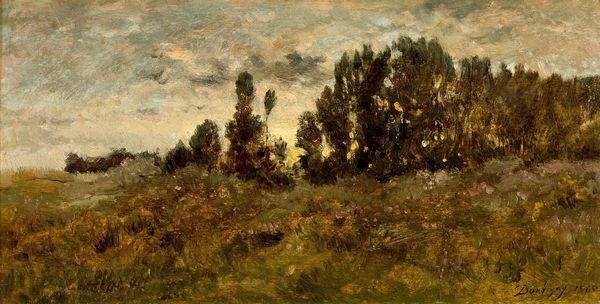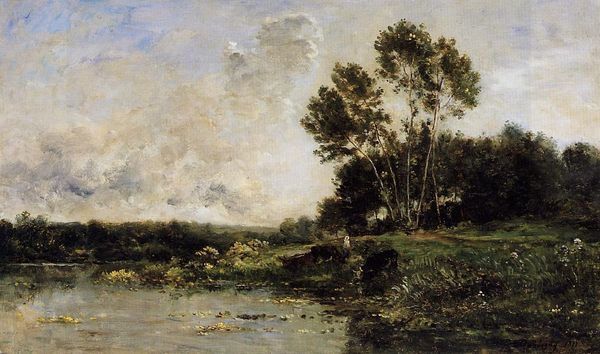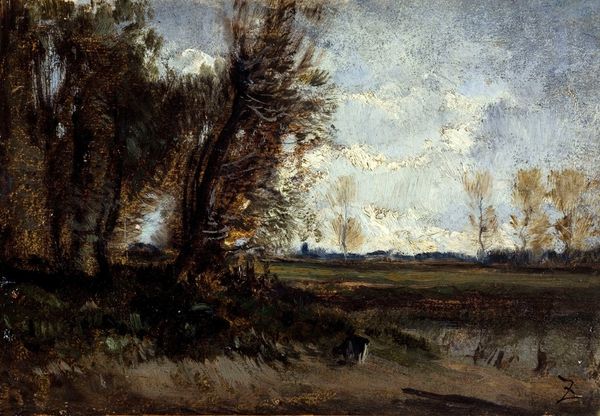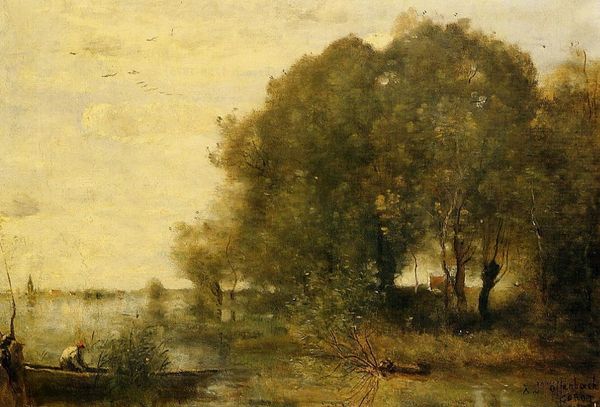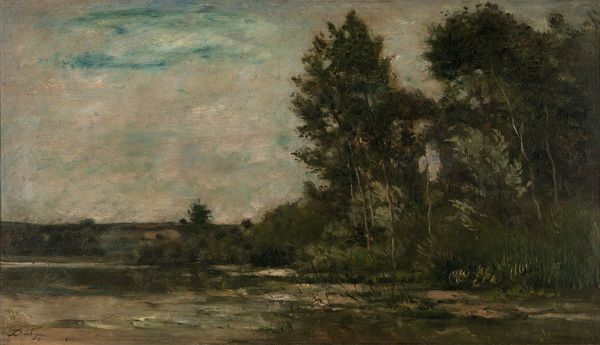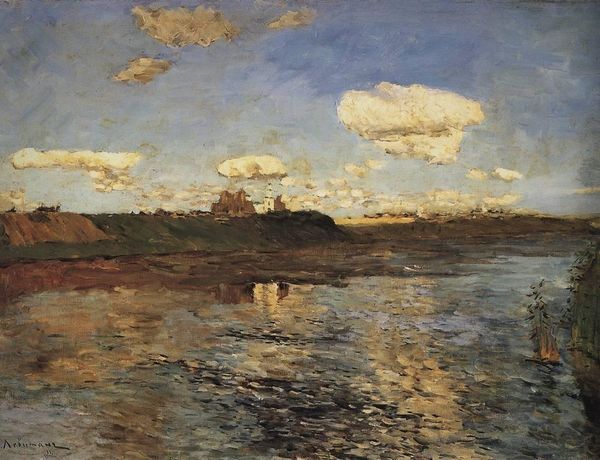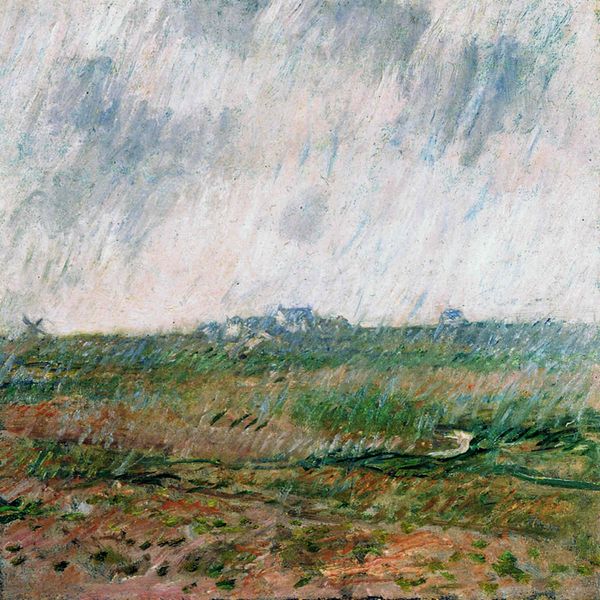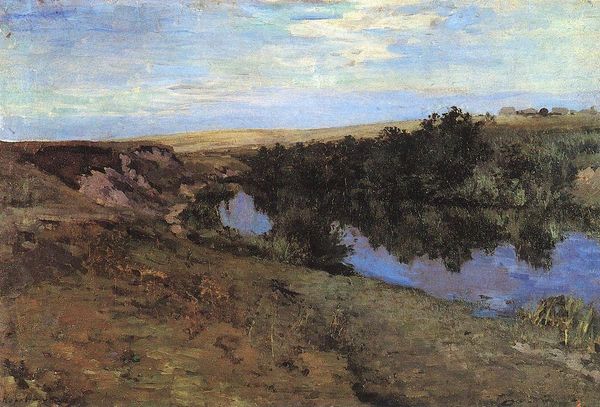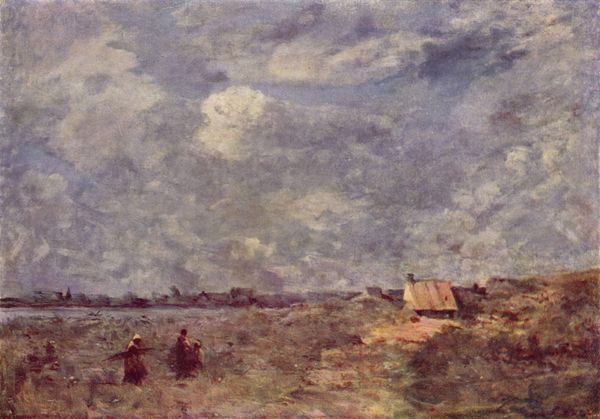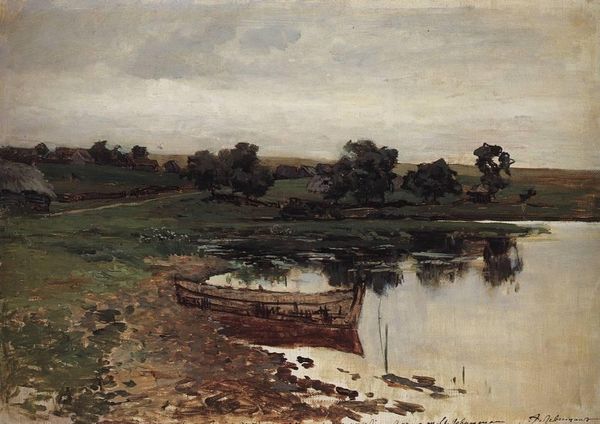
Dimensions: 34 x 43 cm
Copyright: Public domain
Curator: Here we have Théo van Rysselberghe's "A Pond in Campine," painted in 1884. Editor: A somber painting! My first impression is one of stillness and almost melancholy. The muted colors, predominantly greys and browns, definitely contribute to this feeling. Curator: Indeed. It is part of Rysselberghe’s early body of work, before he fully embraced Neo-Impressionism. This is most likely painted en plein air, judging from its gestural strokes. Notice how the sky takes up about half the composition, really emphasizing atmosphere and light. Editor: I see how the brushstrokes build up to suggest texture—the scrubby vegetation along the water’s edge, the reflections on the pond itself, the heavy clouds above. It feels very immediate, like he captured a fleeting moment. Did the artist focus much on landscape, or how might this work fit within the context of his career? Curator: Rysselberghe, deeply influenced by Émile Zola, aimed to capture the social realities of his time, but initially experimented a lot with landscape. This painting reveals him engaging with rural Belgium—specifically, the Campine region. One can note the nascent Impressionistic techniques. Editor: There is almost a social commentary at work by his choosing to represent a desolate landscape in the era of growing industrialisation. The composition is striking. The horizontal bands create a sense of vastness and quiet contemplation. It encourages us to pause and consider the relationship between humanity and the natural world. It reminds one of works by the Barbizon school. Curator: I find your read convincing. And while later his focus would shift to portraits of the Belgian elite, this particular painting still holds value in its own right. The muted tones and strong horizontals give it a distinctly contemplative air. Editor: Absolutely. Considering its time and place, it prompts reflections on rural life undergoing immense changes. Curator: Well, it seems we’ve uncovered yet another layer in this rather simple scene, one that links aesthetic choice to a wider cultural narrative. Editor: Yes. Rysselberghe successfully encapsulates a moment in time using tone, composition, and a wonderful ability to utilise available light.
Comments
No comments
Be the first to comment and join the conversation on the ultimate creative platform.
